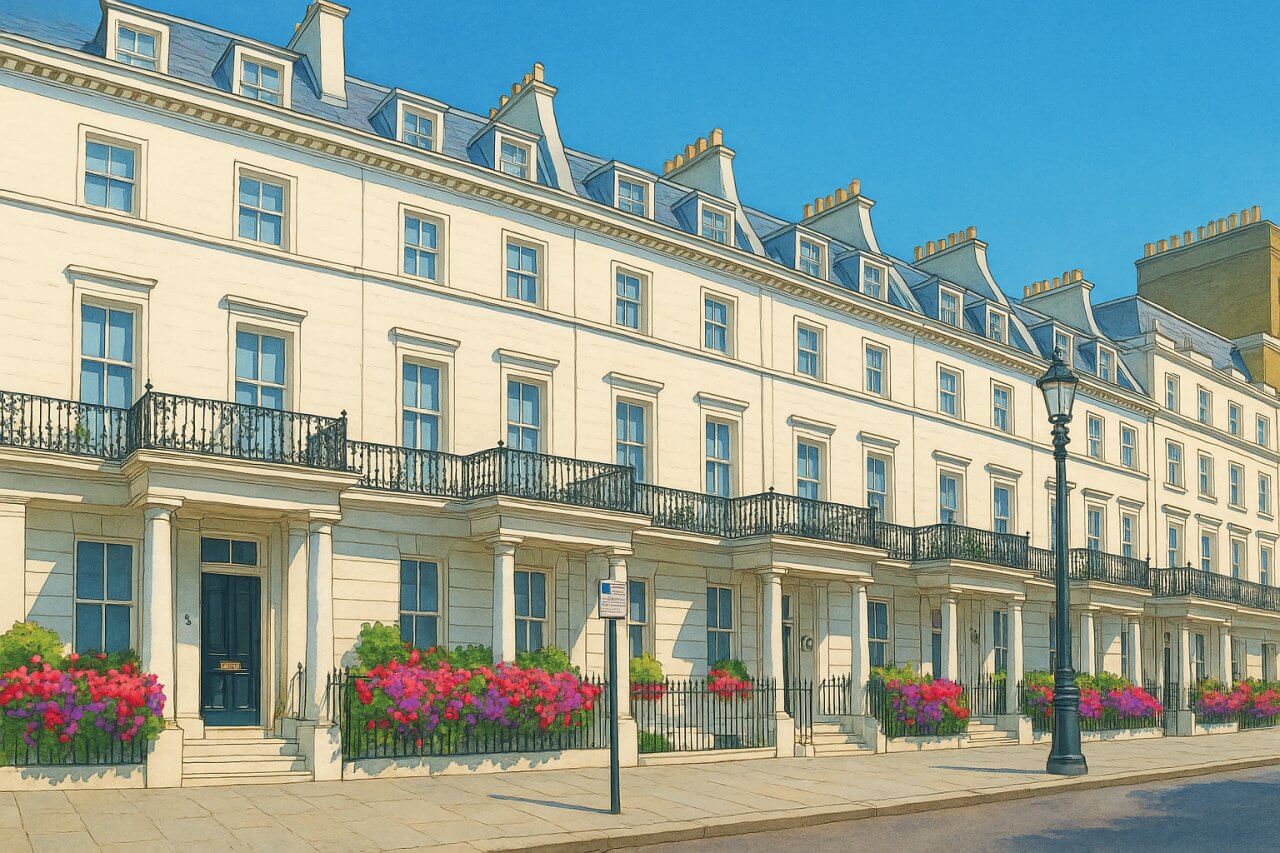
Why Belgravia's Elegant Architecture Stands Apart - And How It Influenced the Rest of London
Ever walked through Belgravia and wondered why its white stucco buildings feel so distinct — and why homes here cost a fortune? The answer lies in its origins, construction standards, and influence on the rest of London’s architectural identity.
Costly from the Start: Building Belgravia Was Never Cheap
Belgravia wasn’t built on a whim. When it was developed in the 1820s and 1830s by the Grosvenor Estate, the goal was to create a residential district for the upper echelons of society. To achieve this, construction had to meet extremely high standards:
- Use of premium materials such as Portland stone, slate roofing, and richly detailed plasterwork.
- Grand proportions with high ceilings, expansive staircases, and multi-storey layouts — often including basements and mews buildings.
- Symmetrical and elegant facades unified by design covenants across the Grosvenor Estate.
- Supervised by Thomas Cubitt, one of the most influential master builders of the era, known for his refined and consistent vision.
All of this came at a higher cost than building in less regulated or less prestigious parts of London. As a result, Belgravia was expensive from day one.
Do High Building Costs Still Drive Property Prices Today?
Not exactly. While initial construction costs set the tone for luxury, modern property values in Belgravia are driven more by:
- Location: Close to Hyde Park, Buckingham Palace, and central government institutions.
- Heritage and prestige: Living in Belgravia confers a certain status, especially with blue plaques and historical pedigree.
- Controlled development: The Grosvenor Estate still owns much of the land and carefully regulates renovation and redevelopment, preserving the area’s distinct character.
- Size and elegance: Many of these buildings range from 3,000 to over 10,000 square feet (approx. 280 to 930 sq m), placing them firmly in the super-prime market.
So while Belgravia’s high cost of construction laid the foundation, exclusivity, history, and timeless style are what drive its real estate values today.
Which Parts of London Imitated Belgravia’s Look?
The visual language of Belgravia — white stucco facades, porticoed entrances, garden squares — was immensely influential in the Victorian era and beyond. Other parts of London that echoed its architecture include:
South Kensington and Kensington
These areas feature long terraces and crescents of white stucco houses surrounding garden squares. Their layout and appearance were directly inspired by Belgravia's success.
Bayswater and Notting Hill
Also known for elegant, pale facades and similar proportions, these neighbourhoods sought to attract an affluent clientele by emulating Belgravia's refined style.
Primrose Hill and Regent’s Park
Although architect John Nash led much of the development here, the same classical principles — symmetry, stucco, and exclusivity — were clearly present.
While many areas copied Belgravia’s look, few matched its rigorous visual unity or the scale and concentration of luxury townhouses it contains.
Fun Fact
Belgravia’s iconic uniformity wasn’t accidental. The Grosvenor Estate required all developers to adhere to Cubitt’s master plan, right down to the height of windows and the style of railings. This early example of design regulation gave Belgravia its famously cohesive appearance — which still turns heads today.
Quick Facts
- Belgravia’s architecture is characterised by stuccoed facades, grand proportions, and neoclassical symmetry.
- Developed in the 1820s–30s by the Grosvenor Estate and master builder Thomas Cubitt.
- Higher construction costs stemmed from strict quality standards and luxurious materials.
- Today’s high property prices are driven more by location, prestige, and conservation restrictions.
- Areas that emulated Belgravia include Kensington, Bayswater, and Regent’s Park.
- The area’s unified look is the result of a deliberately enforced architectural vision.

Painting of Why Belgravia’s Elegant Architecture Stands Apart - And How It Influenced the Rest of London (View image in full size)